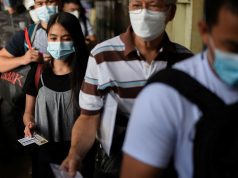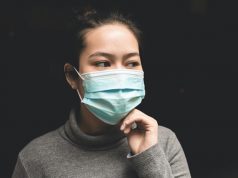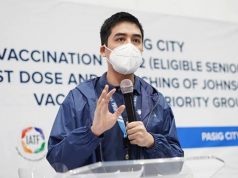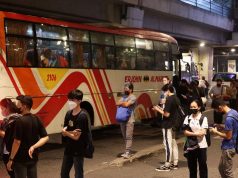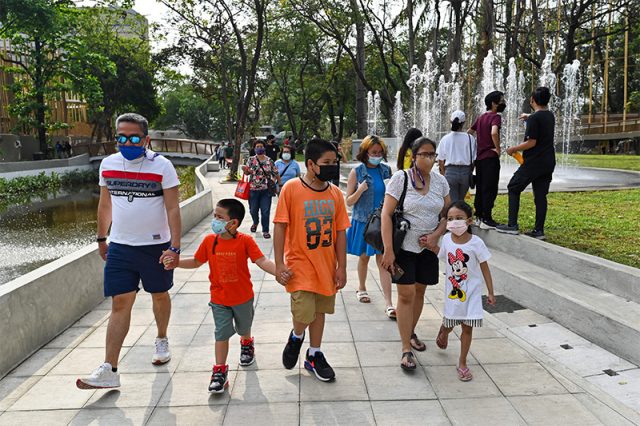
Cebu City‘s executive order on the optional use of face masks outdoors was met with quips to genuine concerns about the policy.
Cebu City Mayor Michael Rama on Monday amended Executive Order No. 5 which dropped the mandatory wearing of face masks in outdoors and open spaces.
“The use and wearing of face mask is hereby declared as non obligatory within the territorial jurisdiction of the City of Cebu. Instead, the wearing of face mask should be individually taken by all citizen, as measure of self preservation and protection under the principle of shared responsibility and mutal respect,” it reads.
EO No. 5 also gave establishments, businesses and entities, including administrators of buildings and facilities, the choice “to determine the propriety of the requirement, use and wear of face mask in their respective areas of responsibility.”
However, wearing of face masks remains required in hospitals, clinics and other medical or diagnostic facilities.
Those who are immunocompromised, sick or exhibiting flu-like symptoms are also required to wear face masks.
Rama issued amendments to the face mask policy through Executive Order No. 6 where he said that the “non obligatory” use of face mask trial period is from September 1 to December 31 this year.
“The same period is hereby referred to as the trial and observation period,” EO No. 6 said.
It will be “automatically lifted” once the city records a surge in COVID-19 cases, as verified by official data of the government in coordination with other institutions.
The Department of Health said it is unaware of Cebu City’s “trial” period on the non-obligatory wear of face masks.
DOH officer-in-charge Maria Rosario Vergeire said the issue would be tackled by the Inter-Agency Task Force on Emerging Infectious Diseases.
“Remember, IATF is recommendatory to the Office of the President. [So] we will be discussing all of these issues later on, and we will be informing the public once the Office of the President has decided already,” she was quoted by reports as saying on Monday.
The optional face mask policy has since earned buzz on social media, with some Filipinos praising the “non-obligatory” use of face masks.
“Oh yeah. I can finally flex my skin care,” a Facebook user wrote in response to the development.
“Thank you Mayor, I have already ordered several lipsticks from Avon,” another Filipino commented, as translated from Cebuano.
Others took the news with a sense of humor and poked fun at the trial period.
“Trial period. Ano ‘yan, Spotify??” a Twitter user wrote with loudly crying emojis, referring to a music streaming app.
“May pa-trial period. Spotify yarn,” another online user quipped with the same emoji.
Some were more cautionary and critical of the executive order.
“Trial only for such a dangerous, delicate, uncertain, evolving killer disease?” a Facebook user commented.
“Trial and error is not applicable for health issues……” wrote another Pinoy.
“Face mask is the first important measure and the last one to go to address the Covid pandemic,” health reform advocate and former National Task Force for COVID-19 special adviser, physician Tony Leachon, said on Facebook.
“Face masks should be our way of life until we can declare full control of the pandemic with the indicators set. No compromise on public safety,” he added.
On masking
The government started requiring face masks in April 2020, a month after the World Health Organization declared the COVID-19 outbreak a pandemic.
Wearing face masks is one of the public health and safety protocols to prevent infection from COVID-19, which can be spread through respiratory droplets or through aerosols containing viral particles.
Experts from the global community noted that wearing a face mask and strictly practicing physical distancing measures can limit the spread of the virus.
“A review funded by the World Health Organization and published in the scientific journal Lancet earlier this month concluded staying at least three feet from others and wearing face masks does appear to limit the transmission of the coronavirus,” a 2020 article from The Washington Post read.
Researchers led by a Texas A&M University professor believe that wearing a face mask in public “corresponds to the most effective means to prevent inter-human transmission.”
“Our study establishes very clearly that using a face mask is not only useful to prevent infected coughing droplets from reaching uninfected persons, but is also crucial for these uninfected persons to avoid breathing the minute atmospheric particles (aerosols) that infected people emit when talking and that can remain in the atmosphere tens of minutes and can travel tens of feet,” Mario Molina said, as quoted by Science Daily.
While catching COVID-19 is less likely in open spaces, experts said that wearing face masks outdoors depends on several factors.
“Outside is protective, but it’s not a total risk eliminator,” epidemiologist Saskia Popescu said to National Geographic in 2021.
“When we’re seeing transmission outdoors, it’s people who are close to each other, talking face to face,” she added.
A former United States’ Centers for Disease Control and Prevention official emphasized some of the factors to consider.
“It depends a lot on a number of things, including how crowded an outdoor activity is, how much movement there is, if everybody’s facing the same direction versus everybody facing each other, how vigorously people are exhaling,” Lisa Lee said.
“If everyone is breathing really heavily, their droplets will travel further, so you’ll want a wider berth than six feet,” she added.
The report, citing Popescu, noted: “The closer people are, the more droplets an activity is generating, and the longer people are close to one another, the more the risk increases and the more important a mask becomes.”






